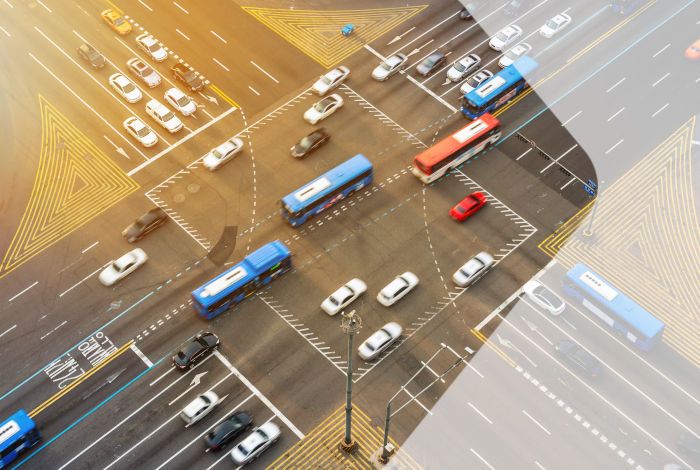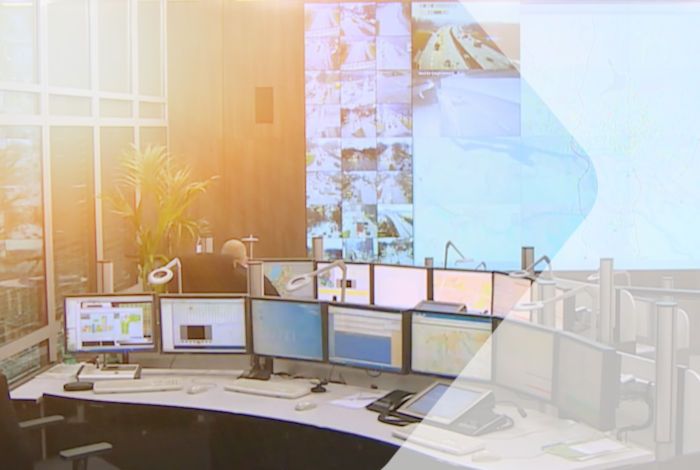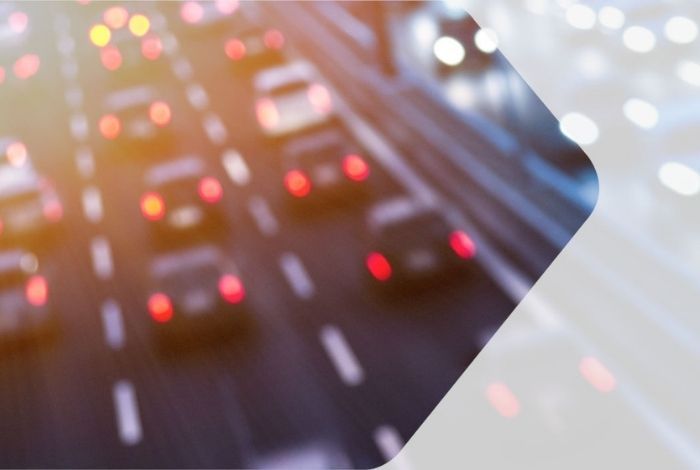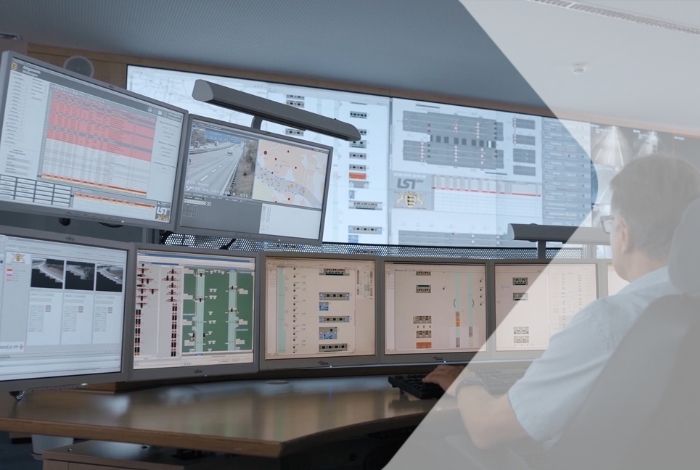Traffic telematics, or the internationally used term ITS (Intelligent Transportation Systems), refers to the collection, processing and use of traffic-related data, pursuing the goal - with the help of state-of-the-art sensors, analysis, control and communication technologies - of improving all traffic networks in terms of their safety, mobility and efficiency. Swarco offers a wide range of applications in the field of traffic telematics that process data in real time too, for example.
reduce traffic jams,
increase the flow of traffic,
minimize the environmental impact,
make transport & logistics more effective for commercial users,
and make the use of public transport more efficient and attractive.

"At SWARCO, we provide innovative solutions to cities, municipalities, logistics centers and transit operators to more effectively achieve their transportation and mobility goals. We work with local, state and national governments around the world, implementing projects of all sizes with a wide range of challenges. Our collaboration ranges from optimizing traffic signaling systems and reducing CO² emissions to improving logistics through connected vehicles."
Michael Schuch, Chief Operating Officer (COO)
What are intelligent transport systems needed for?
The technological developments of the last decades offer logisticians & transport administrations around the world the opportunity to sustainably change the way they manage and operate their transport networks - and in the process eliminate long-standing problems.
Many cities & communities around the world are struggling with similar challenges:
● Inadequate or neglected road development.
● Increased traffic volume, rising number of accidents, slow progress.
● Insufficient attractiveness of public transport.
● Increasing congestion, increased costs for logistics & travel times.
● Excessive environmental impact of transportation & individual traffic.
What can we do for you?
SWARCO helps cities and communities to sustainably improve their transport systems.
Increasing the efficiency of the transport infrastructure
Avoidance of accidents and congestion
Shift from individual to local transport
Reduction of environmental impact
Traffic Telematics: Solutions - by SWARCO
Experience shows that most problems in transportation and traffic are caused by the lack of timely and accurate information, and by the lack of appropriate coordination within the controlling systems. Thus, the positive contribution of information technology is primarily to provide better information faster. To realize this, we at SWARCO rely on various intelligent technologies and specialize in the following solutions:
Our Competences
Traffic Control & Monitoring
Monitoring traffic forms the basis for modern traffic telematics. In order to derive targeted measures, it needs the right information about the traffic network. Traffic data mostly comes from sensors and detectors, traffic cameras and other sources. SWARCO offers the full range of solutions, software and hardware for traffic monitoring.
Traffic Management Centers
Many cities around the world are growing very fast. With limited capacity, it becomes difficult to manage mobility and keep traffic flowing. This requires a sound mobility strategy and well-organized traffic management that takes a holistic approach to mobility, incorporating all modes of transport and supporting the city's mobility strategy.
Connected Driving
Cooperative intelligent transportation systems (C-ITS) connect vehicles with other vehicles, roadside infrastructure, other road users - such as pedestrians and cyclists - and cloud-based services. The integration of a variety of ITS subsystems promises to significantly improve mobility, reduce traffic congestion, and save lives by significantly reducing traffic accidents.
Traffic Data Aquisition
The lynchpin of modern traffic management is the collection and analysis of traffic data. Important goals are to record the traffic situation qualitatively and quantitatively and to communicate the current status of all traffic systems in real time. Thanks to the latest technologies, a seamless automatic recording of traffic becomes possible - and operators can monitor complicated traffic situations in a targeted manner and make tailor-made decisions more quickly.
Want to know more about SWARCO solutions?
Contact us now for more information.
The artery of traffic telematics: traffic data acquisition
The linchpin of intelligent transportation systems is the collection of traffic data - in real time. The most important data collected in traffic telematics include:
Traffic volume (number of road users)
Speed
Occupancy
Classification (e.g. vehicle speed and length)
Traffic data acquisition serves the purpose of mapping the real traffic state and making predictions. The objectives are to record the traffic situation qualitatively and quantitatively and to transmit the current status of all traffic telematics systems (e.g. switching states, errors, failures). Thanks to the latest technologies, seamless automatic recording of traffic becomes possible and operators can monitor complicated traffic situations in a targeted manner and make appropriate decisions in real time.
Using traffic telematics by SWARCO and rethinking mobility
Traffic Telematics by SWARCO is a combination of state-of-the-art information and communication technologies used in traffic management systems to promote traffic safety, efficiency and sustainability, reduce congestion and improve the driving experience.
Opportunities for improvement through ITS are many:
● Systems that were previously controlled by human hands are automated.
● Utilization in the road network is monitored and controlled in real time.
● Costly physical infrastructures (e.g. servers) are replaced by flexible cloud services.
● Analyses are no longer based exclusively on historical data, but take place via real-time data analysis thanks to ITS.
● Road users are reached and influenced via a variety of channels such as mobile devices or vehicle systems.
Last but not least, new technologies in the field of ITS are enabling operators around the world to change the way they manage their transportation systems. As a result, cities and municipalities are increasingly improving traffic flow, increasing traffic safety, and - through the targeted reduction of emissions - making a significant contribution to greater environmental protection.
FAQs
Frequently asked questions briefly explained
Transport telematics is the use of digital technologies to control and optimize public and private transport and logistics. An improvement in coordination and an increase in efficiency - within and between modes of transport (e.g. rail, road, water & air transport) - is achieved to a large extent through the acquisition and processing of data in real time. Thus, traffic data acquisition is a core element of transport telematics.
The key benefits of consciously deploying intelligent traffic systems are:
● Relevant real-time traffic data collection
● Reduction of stops and delays at intersections.
● Automated speed enforcement
● Acceleration of travel times
● Faster & more targeted responses to incidents such as congestion, accidents, etc.
By means of traffic telematics, cities, municipalities & logisticians pursue three main goals:
1. improving traffic flow: e.g. by increasing the efficiency of the traffic infrastructure, by avoiding congestion and search trips, etc.
2. increasing traffic safety: e.g. by data-based monitoring of road usage, by real-time dynamic traffic management systems, etc.
3. environmental protection: e.g. by reducing emissions and fuel consumption, targeted promotion of public transport systems, etc.
Traffic telematics applications, or intelligent transportation systems, are designed to improve mobility, increase safety, and reduce environmental impact. Examples include:
● Vehicle-to-vehicle communication for improved safety: e.g., to transmit messages to following vehicles if the vehicle ahead breaks down.
● Better use of existing traffic routes: for example, to inform drivers in good time what to expect on their route and how to avoid bottlenecks (traffic jams, road works).
● Real-time information: Up-to-date information about travel times, speeds, delays, accidents, detours, conditions in work zones is delivered to drivers in real time.
● Public transit vehicles can be given priority at traffic signals. Bus lanes with dedicated signals lead to increased travel speeds, ultimately reducing the number of vehicles needed.
● Telematic logistics systems: Intelligent fleet management systems, also known as "telematics systems," make it easier to locate freight, reduce empty runs and detours, and ensure improved use of the transport vehicle.




